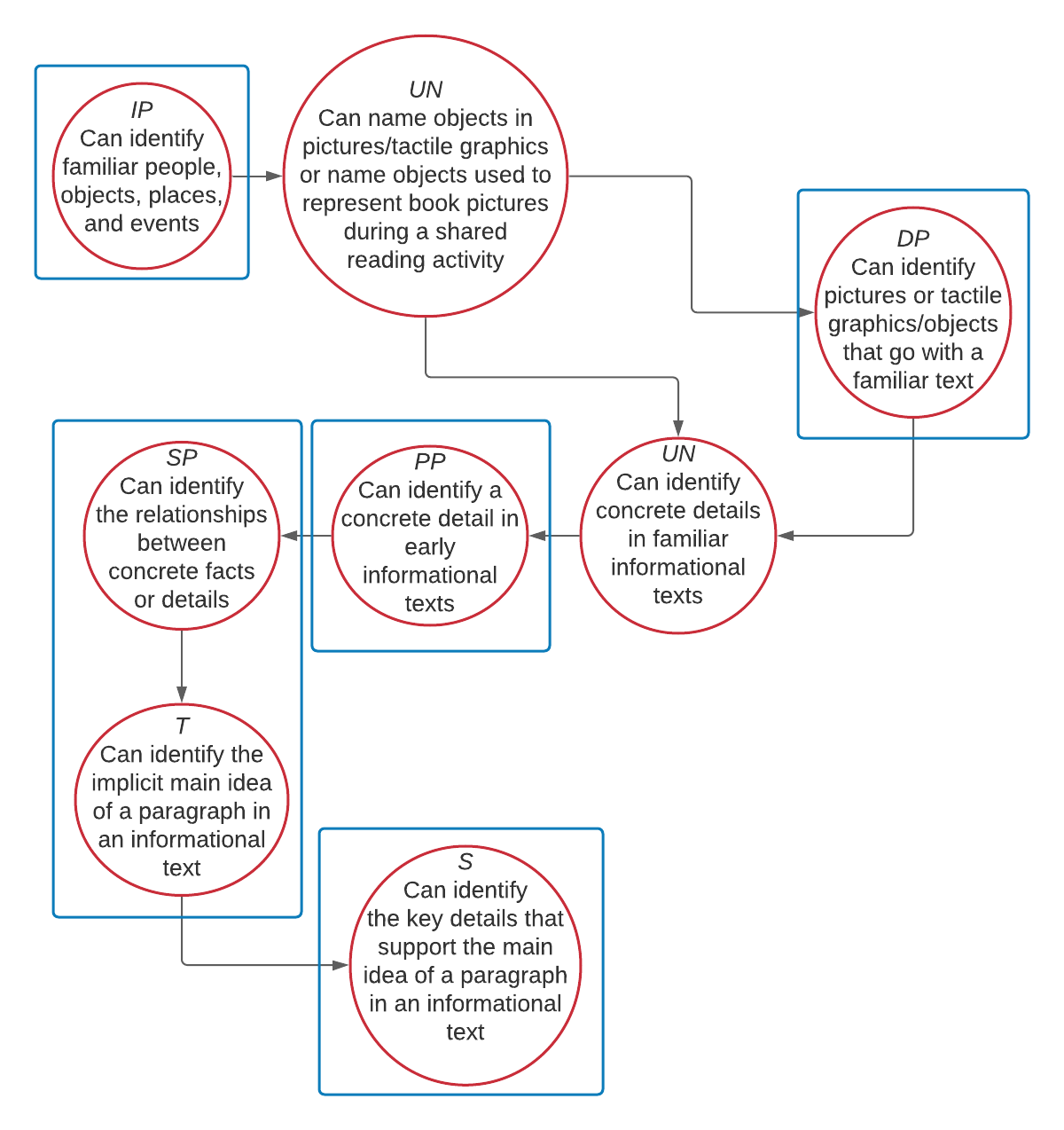Think of the learning map model as a common road map. The learning map model illustrates the connections among the knowledge, skills, and understandings necessary to meet academic content standards. Although students may share a common destination, they often begin their journeys from different points on the map. The learning map model helps parents and educators guide students to success by showing them where a student is now, where the student has been, and where the student is going.
The basis of all DLM assessments, the learning map model was developed by teams of researchers through extensive review and synthesis of research literature. It undergoes continual review and refinement by experts in academic content, special education, and cognition.
Points on a Map
The learning map model shows individual concepts and skills in points called nodes. Good instruction, however, requires more than simply teaching individual facts or skills. Effective teachers need to understand how knowledge and skills are connected. That is why the learning map model also includes many connections among its nodes -- to show different ways students reach the same goals.
As of April 2016, the English language arts portion of the learning map model has 2,089 nodes, with 5,045 connections. The mathematics portion of the learning map model contains 2,399 nodes and 5,200 connections. There are 150 foundational nodes associated with both subject areas. The DLM consortium is developing a new portion of the learning map model for science.
Measuring Success
Students who take DLM assessments are instructed and assessed on Essential Elements. Essential Elements are grade-specific expectations about what students with the most significant cognitive disabilities should know and be able to do. The Essential Elements relate to college and career readiness standards for students in the general population.
Every Essential Element has linkage levels, which are small collections of nodes. Unlike traditional assessments, DLM testlets measure achievement with the help of linkage levels.
Each Target linkage level aligns most closely with the knowledge, skills, and understandings described by the corresponding Essential Element. The Target level is the standard linkage level for assessment. In English language arts and mathematics, students who have not yet reached the Target may instead be assessed at a linkage level that precedes the Target. These additional linkage levels are, in order of least to most complex, Initial Precursor, Distal Precursor, and Proximal Precursor. Students who master the Target may test at a Successor linkage level.
Science Essential Elements currently have three linkage levels. From least to most complex they are Initial, Precursor, and Target.
The graphic below is a mini-map. Mini-maps have been developed from the learning map model for each assessed Essential Element. They include the linkage levels used to assess the Essential Element and show pathways between the linkage levels.

Resources
Using Mini-Maps to Plan Instruction (pdf)
PDF containing information on how to use-mini maps to plan instruction
